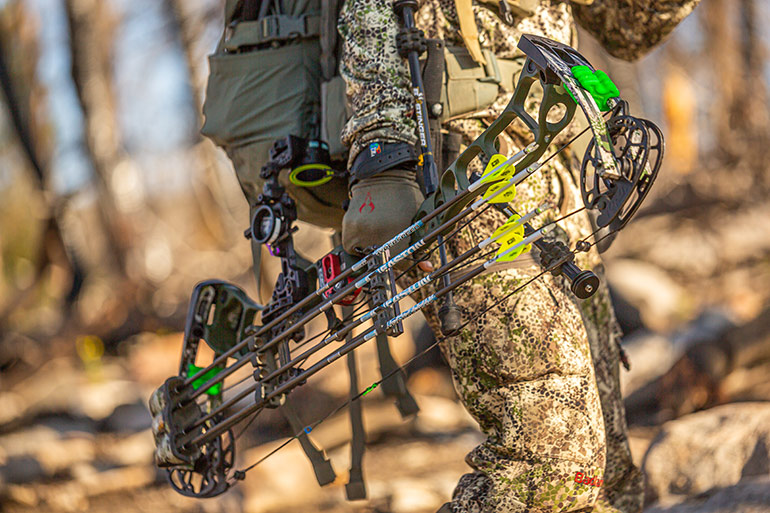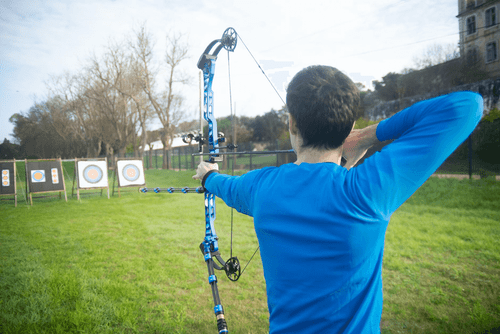Maximizing Your Archery Efficiency With the Right Substance Bow Stabilizer: a Thorough Introduction
One vital yet often-overlooked component in enhancing precision is the compound bow stabilizer. By recognizing the nuances of choose and enhancing a compound bow stabilizer, archers can tweak their tools to raise their capturing experience to new degrees of proficiency and control.
Relevance of Bow Stabilizers in Archery

Additionally, bow stabilizers assist in stabilizing the weight circulation of the bow, which can improve the archer's stability while firing and aiming. By including weight to the front of the bow, stabilizers can decrease the quantity of torque experienced upon release, causing a smoother and extra regulated shot - compound bow stabilizer. This weight distribution additionally aids in holding the bow consistent for a longer period, permitting the archer to intend more accurately
Sorts Of Substance Bow Stabilizers
When considering the various types of compound bow stabilizers available, it is necessary to understand their distinctive features and functions to establish one of the most ideal option for making the most of archery efficiency. One of the most usual kinds of compound bow stabilizers include sidebar stabilizers, front stabilizers, and back stabilizers. Sidebar stabilizers connect to the sides of the riser and aid in stabilizing the bow during the intending procedure. Front stabilizers, additionally referred to as long rods, are connected to the front of the riser and aid in absorbing and decreasing any type of resonances triggered by the launch of the arrowhead, hence enhancing accuracy. Back stabilizers, likewise called back stabilizers, are placed to the rear of the bow and aid in counterbalancing the weight of other accessories, leading to enhanced stability and stable intending. In addition, some stabilizers feature flexible weights that enable archers to adjust the balance and feel of their bows according to their preferences, making them flexible options for archery enthusiasts of all degrees.
Aspects to Consider When Picking
In examining compound bow stabilizers, understanding the distinctive functions and features of each type is critical for making a notified decision on the most ideal option to improve archery efficiency. When choosing a stabilizer, one have to think about the weight of the stabilizer itself. While a larger stabilizer can provide even more security by over at this website reducing the bow's activity, it may likewise create exhaustion during long shooting sessions. Balance is one more critical element to contemplate. The stabilizer's length and design substantially impact the bow's equilibrium, impacting the shooter's ability to hold stable aim. Furthermore, the product of the stabilizer can affect its effectiveness. Carbon fiber stabilizers are lightweight and absorb resonances well, boosting precision. The number and adjustability of dampeners on the stabilizer can fine-tune its performance by reducing sound and shock upon release. By thoroughly examining these variables, archers can pick a compound bow stabilizer that lines up with their shooting design and optimizes their total efficiency on the archery array.
Installment and Change Tips
For ideal performance and accuracy in archery, mastering the installment and modification of your bow stabilizer is essential. Correct setup starts with attaching the stabilizer to the bow's riser, guaranteeing it is firmly safeguarded.
When changing the stabilizer, begin with tiny incremental changes rather than extreme changes. Pay focus to how the bow reacts to modifications in stabilizer setups and make changes as necessary. Regularly check the stabilizer's tightness and general problem to guarantee it proceeds to function optimally.
Upkeep and Care Standards

When not in use,It is likewise important to store your bow with the stabilizer in a secure and secure location. compound bow stabilizer. Avoid leaving it in severe temperature levels or subjected to route sunlight for prolonged periods, as this can create damage to the stabilizer. Periodically check the stabilizer's placement to guarantee it is still correctly positioned on your bow. Adhering to these upkeep and care standards will certainly help you obtain one of the most out of your bow stabilizer and enhance your overall archery efficiency.
Verdict
In final thought, picking the ideal compound bow stabilizer is critical for maximizing archery efficiency. Understanding the value, types, variables to consider, installment and adjustment ideas, as well as maintenance and treatment guidelines can greatly affect one's precision and uniformity in capturing. By selecting a stabilizer that matches individual requirements and choices, archers can enhance their general efficiency and achieve much better outcomes on the range or in competition.
Bow stabilizers play an essential function in boosting an archer's accuracy and consistency by minimizing resonances and stabilizing the bow during the launch of an arrowhead - compound bow stabilizer.Additionally, bow stabilizers assist in stabilizing the weight circulation of the bow, which can improve view publisher site the archer's stability while firing and intending. The most common types of compound bow stabilizers include sidebar stabilizers, front stabilizers, and back stabilizers. Back stabilizers, additionally called rear stabilizers, are installed to the more info here back of the bow and assist in reversing the weight of various other accessories, resulting in boosted security and stable aiming. When selecting a stabilizer, one must think about the weight of the stabilizer itself